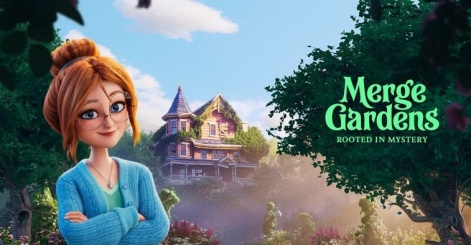Futureplay's match3 and merge mobile game Merge Gardens got off to a promising start when it was initially released in 2020, but shortly after Plarium acquired the company in 2021 the studio's most profitable title began to lose its audience. Rather than cut and run the team opted to focus their efforts on a complete refresh of the game.
Fast forward to 2023, and Futureplay had completely refreshed the game, bringing in new graphics, characters and gameplay. The shake-up was well received by players and led to a revitalisation which was reflected in the game's increasing metrics.
We spoke with Futureplay's head of marketing, Joonas Virtanen, who worked on the game during its refresh to discuss the initial decision that led to the redesign, what challenges the team faced and ultimately, what the outcome was for the game.

PocketGamer.biz: Tell us about the early days of Merge Gardens. How was its development period and what was the initial release like?
Joonas Virtanen: Merge Gardens was developed against an aggressive yet efficient nine-month timeline from start to launch. The game launched globally in the fall of 2020 with really good metrics, especially retention.
While things got off to a good start, the game's performance began to dip.
What do you think was the problem?
In the hyper competitive games industry, not growing is troublesome. The game was getting regular updates, monetisation was improving, and it looked healthy in general, but the marketing side of the equation was problematic. No matter what we tried, we just couldn’t find scale.
As soon as we tried getting above a certain level of spend, the metrics just crashed. We knew we had to do something.
Many studios in this position may have opted to kill the game but Futureplay opted to relaunch it. What were some of the initial ideas behind this decision?
We invested to understand our core audience better and bring in new types of creatives. Over six months, we developed a pretty good diagnosis for the problem. We knew who our core audience was 30 to 50 year old females. We knew the size of that audience is at least 10% of the entire mobile gaming market. We knew narrative-led, high-quality 3D animations were the most promising creative for this demographic. We knew what kinds of motivations our audience had and what we weren’t catering to, like storylines and compelling characters.
One thing led to another, and soon, we were rebuilding the entire product funnel from ads to storefronts and the actual game itself.Joonas Virtanen
Ultimately, all those things came together and it was clear we needed a new brand built from the ground up. We also set a very ambitious target for ourselves to 10x the game.
How does one start such a project?
At first, we intended to rebuild the brand purely from a marketing point of view. From our perspective, we had a good game with steady KPIs, but soon after we started the brand development, everyone in the company got excited about it.
The new brand narrative catered nicely to the direction we were taking on the game design side. One thing led to another, and soon, we were rebuilding the entire product funnel from ads to storefronts and the actual game itself.
How much of the game was reworked?
The user experience changed significantly. A previously open sandbox game became more of a controlled experience with narrative-heavy quests driving the player's progression. Behind the scenes, it worked as before, but we made the gameplay loop less overwhelming and more palatable for our players.
All-new characters, dialogue and quest systems were added. A new progression mechanic was born, where players can free certain characters from their topiary state. Many of these things were on our radar already, but this rebrand provided the perfect wrapper for us to make these changes.
And how long was the development process to make all of these changes?
The brand development process took close to 18 months from start to finish. The game development side of that was approximately six months.
What was the initial feedback from fans once the game relaunch was live?
We launched the new version of the game with careful A/B testing to a small subset of the player base first, then ramping it up all the way to 100%.
The initial metrics during the rebrand soft launch were extremely promising and we saw significant improvements. Keep in mind, at this point none of the new marketing creatives had gone out yet, the storefront looked the same as before, and suddenly the game changed dramatically to some players. Even with all that considered, new and old players alike were clearly enjoying the rebrand more than the original.
Since the rebrand, we’ve seen 10x in installs and also 2x in average revenue per daily active users.Joonas Virtanen
Once we rolled out the new update globally on January 26, 2023, it was like we stepped into a rocket ship. Players loved the new brand, the animated trailer, the early game progression improvements, and the new monetisation and progression mechanics. All of our key KPIs, both on the game and marketing side, found a new elevated baseline and stayed there.
Can you tell us what some of those metrics became? In terms of revenue and installs?
Since the rebrand, we’ve seen 10x in installs and also 2x in average revenue per daily active users. We believe we are still very much on a growth trajectory with this title.
The relaunch is a great comeback story. What advice would you offer others who are stuck in a similar position considering if they should kill or revitalise a game?
Every case is unique and there are no formulas. That said, doing the work to understand your player’s needs within the context of your game is key. Try to understand the problem as well as you can. We had a marketing problem but maybe you have a different one? Build on the successes and focus your efforts on where they matter the most.
And, most importantly, prepare for a marathon. It’s almost a year from our relaunch and it feels like we’ve just started to really rebuild this brand.
And finally, what's on the cards for Merge Gardens as we head into 2024?
Even though we made significant changes to the game itself a big part of our brand strategy takes place outside the game. In January 2023, we rolled out our first story trailer, introducing our protagonist, Daisy, her lawyer friend Rita and the mysterious garden. We deliberately chose a high-end animated movie-esque art style for the trailer because our goal is to have these help drive our narrative moving forward. The successful launch provided us with the runway to do just this, and we’ve been executing this strategy ever since.
To date we’ve released four episodes of our very own “streaming show”. You can find them all on our Youtube channel.
We utilise the episodes as ads but they also serve a bigger purpose to build the game universe alongside the in-game narrative. The animations show the same world in a different light, provide more depth to the characters and allow your imagination to fly a bit higher as you play the game. Our players love them and keep asking for us to make a full movie. I can’t promise the movie, but more episodes are definitely in the works for 2024!
The core game itself will continue growing and improving. We have a very detailed roadmap to go deeper with the brand and bring the characters to life even more. And we have a packed 2024 calendar of live-ops with new kinds of events, new features and cool surprises coming.






















